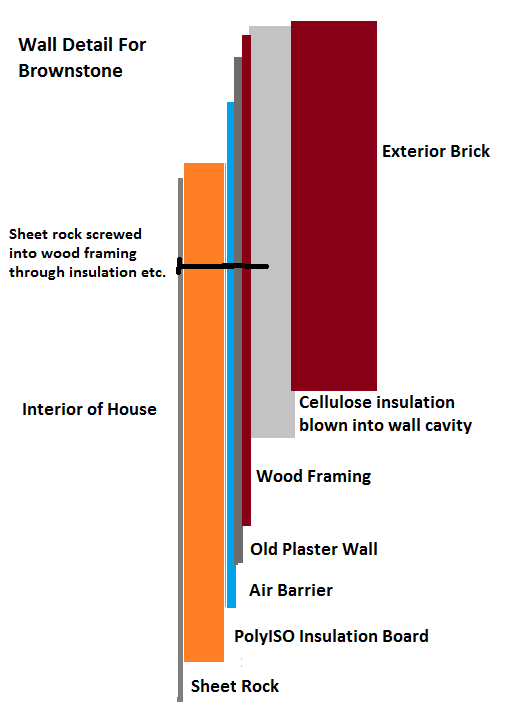Brooklyn homes were originally built without insulation. We often come across a situation where we are doing a green renovation of a Brooklyn building but not gutting it completely. This creates an insulation problem. We want to add plenty of insulation but that is hard if you are working with existing exterior walls.
In this situation I propose two options depending on the budget: a bare bones solution and a prefered solution.
Bare bones solution:
As a minimal solution we suggest blowing insulation into the walls. We knock 4″ holes into the plaster walls and blow cellulose insulation into the exterior wall cavity. Cellulose is about R4 per inch, and if the space is 4 inches deep then at best you get R16. But the studs pass a lot of heat in thermal bridging. So in reality a blown in insulation wall will give you an R 7 to R 12. which isn’t much but certainly a lot better than nothing.
You then patch up the plaster walls and paint.
(As a side note, when non-green contractors throw in R18 fiberglass bats in between the studs they are fulfilling all code requirements yet building a wall that is closer to R 7, which partly explains why the world has an energy crisis.)
Prefered Solution:
The ideal solution would be to blow insulation into the walls as above then lay an air barrier layer so that no air gets into the house. Then we lay PolyISO insulation board over the air sealed walls. We then apply sheet rock over the insulation. We attach the sheet rock by drilling screws through the insulation board to the studs of the old wall.
This would improve the comfort and energy savings drastically due to reduced thermal bridging and increased insulation. If you use 2 inches of PolyISO the R value of the wall would be 19 to 24 which is a much more acceptable number. The air barrier further decreases air leaks and improves the insulation value even more.
Some insulation specialists would choose to remove the old plaster wall because it is easier to install insulation between studs rather than blowing it into the wall cavity. But then you are sending more trash to the land fill and paying for it. I think it is better to leave the trash where it is. Of course if you really needed the extra R value you could tear down the old plaster and put PolyISo between the studs which has at least two R values more than cellulose. But that is overkill for most jobs.
Below are details of the layers involved.


